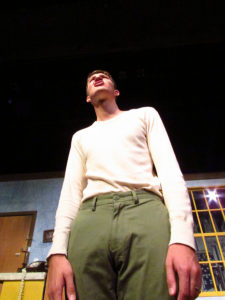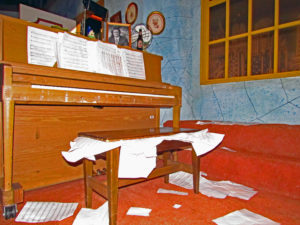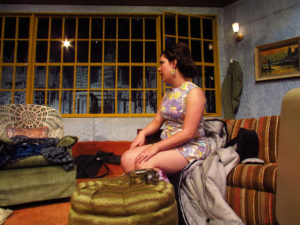Behind the Scenes
Commentary By Russell Trockur
When people go and watch a play they get sucked into the story. With colorful characters, amazing sound, and some wonderful scenes and when it’s done well enough the scenery itself becomes a character. Places that most people could never travel to, places taken right out of time.
But one thing the audience doesn’t get to see or realize is the work that goes into building the scenery, from start to finish.
The set for “House of Blue Leaves” premiering September 24, came to life.
The work is done by shop volunteers, shop workers, and the class Intro to Technical Theater 113, taught by Rob Fulton who designs the sets. Fulton says working in this trade “you become a jack of all trades and a master of none”
The people who work on this set have to know how to safely and effectively run a multitude of tools, anywhere from basic screwdrivers to table saws from welders and drill presses. They even have to know the basics to painting a wall design and minor upholstering
Almost every wall for a play starts with what is called a flat. This is a framed and braced piece of plywood used to give the illusion of an entire wall and allows the workers more creative freedom and spend less time putting together than real walls provide. These flats can be put together to any length the play requires, in this case it’s a small apartment in Queens set in 1965.
Once the flats are arranged, it’s time for paint. With this play the walls of this Queens apartment were painted with this very interesting shade of blue and turquoise on top of these hand painted leaves, finished with a wash of sea foam green giving as much depth as the actors in front of the sets itself.
The furniture looks as if it was taken from 1965, some of which had to be built from scratch, giving the crew even more to accomplish. After putting up walls, cutting out doors and windows, applying paint and furniture it’s almost complete. This is where they go the extra mile with accurate appliances and cabinets to little things like pictures too small to even see from the audience’s view. Then they place period accurate labels on the food and drinks in the refrigerator. 
Trockur is a journalism major who worked on building the set for the play.



